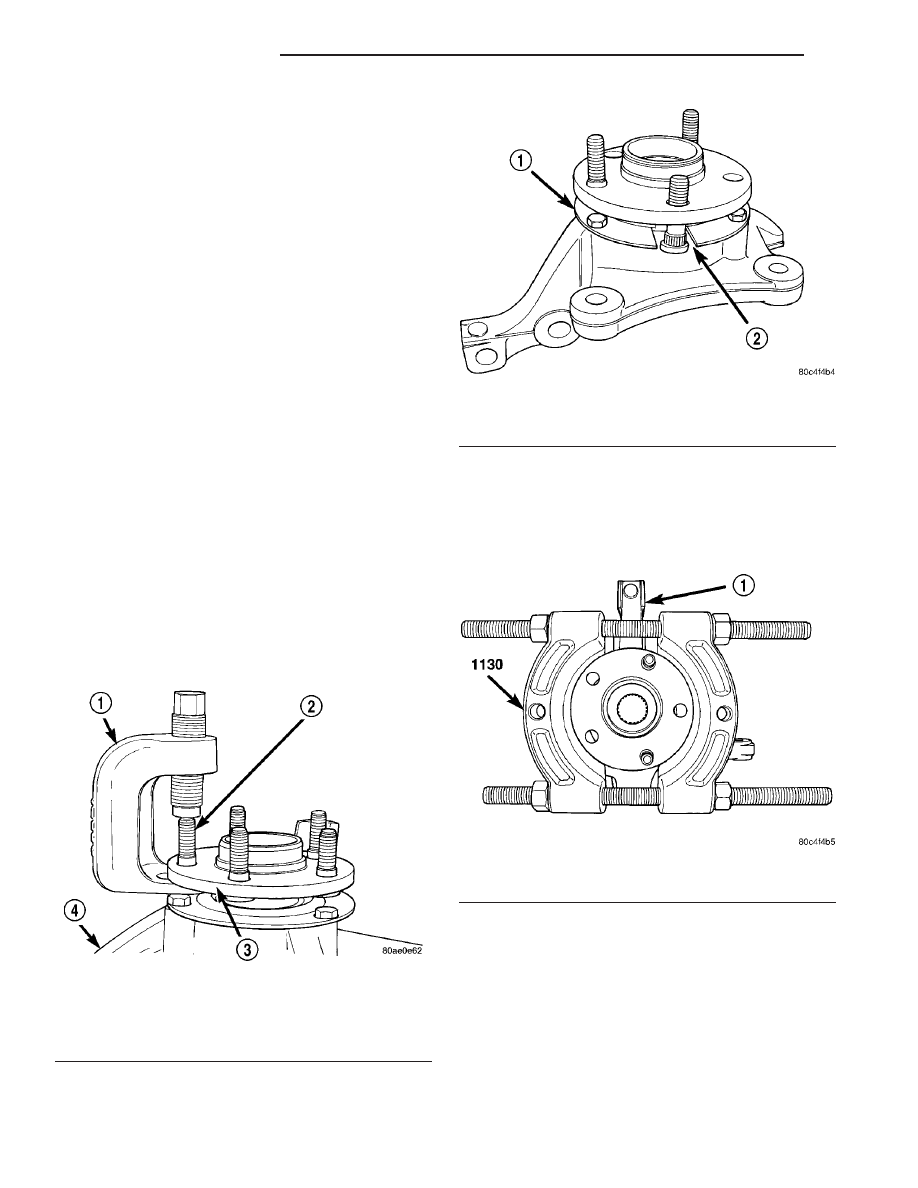Chrysler PT Cruiser. Manual - part 393

NOTE: The cartridge type front wheel bearing used
on this vehicle is not transferable to the replace-
ment steering knuckle. If the replacement steering
knuckle does not come with a wheel bearing, a new
bearing must be installed in the steering knuckle.
Installation of the new wheel bearing and hub must
be done before installing the steering knuckle on
the vehicle.
(15) If the wheel bearing and hub need removal,
(Refer to 2 - SUSPENSION/FRONT/KNUCKLE -
DISASSEMBLY). Do not reuse the wheel bearing.
DISASSEMBLY - STEERING KNUCKLE (WHEEL
BEARING AND HUB)
NOTE: The removal and installation of the wheel
bearing and hub from the steering knuckle is only
to be done with the steering knuckle removed from
the vehicle using the following procedure.
(1) Remove steering knuckle, hub, and wheel bear-
ing as an assembly from the vehicle. (Refer to 2 -
SUSPENSION/FRONT/KNUCKLE - REMOVAL)
(2) Three wheel studs across from one another
require removal from the hub flange. Rotate the hub
to align each wheel mounting stud with the notch in
the bearing retainer plate before removal. Using
Remover, Special Tool C–4150A (Fig. 7), press the
three wheel mounting studs out of the hub flange.
Remove the wheel mounting studs from the hub
through the open notch (Fig. 8).
(3) Rotate the hub so the stud mounting holes in
the hub are facing in the direction shown in the fig-
ure (Fig. 9).
(4) Install the Bearing Splitter, Special Tool 1130,
between the hub and the bearing retainer plate as
shown (Fig. 9). Absence of the three wheel mounting
studs allows the bearing splitter to be installed
behind the flange. Hand tighten the nuts to hold
bearing splitter in place on steering knuckle.
(5) Place the steering knuckle face down in an
arbor press supported by the bearing splitter as
shown (Fig. 10).
(6) Position Remover/Installer, Special Tool 6644-2,
on the small end of the hub (Fig. 10). Using the arbor
press, remove the hub from the wheel bearing. The
bearing race will normally come out of the wheel
bearing with the hub as it is pressed out of the bear-
ing.
(7) Remove the bearing splitter from the steering
knuckle.
Fig. 7 Special Tool C-4150A
1 - SPECIAL TOOL 4150A
2 - WHEEL MOUNTING STUD
3 - HUB FLANGE
4 - STEERING KNUCKLE
Fig. 8 Stud Removal From Hub
1 - BEARING RETAINER PLATE
2 - NOTCH
Fig. 9 Bearing Splitter Properly Installed
1 - KNUCKLE
2 - 8
FRONT SUSPENSION
PT
KNUCKLE (Continued)